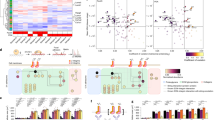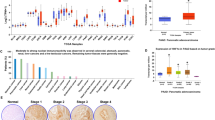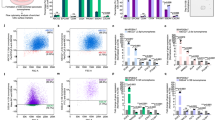Abstract
Hedgehog (Hh) signaling pathway is crucial in growth and patterning during embryonic development. Recent data have shown an association of its activation with cancer formation and maintenance. A ligand-dependent activation, where Hh components (SHH, PTCH1, Smo and GLi1) are aberrantly expressed with PTCH1 being a negative feedback regulator, is a newly identified mechanism for pancreatic carcinogenesis. In this study, we developed a cell-specific cytotoxic model for the treatment of human pancreatic cancer (HPC) in which expression of antisense Smo (SAS) was under the control of the PTCH1 promoter (ptch/p) delivered by an adenoviral vector (Ad-ptch/p-SAS). We observed that the cell-specific cytotoxicity in HPC cells depended on the expressions of inherent PTCH1, Smo and GLi1 in the target cells in which the Hh pathway was presumed to be activated. Fluorescence-activated cell sorting analysis indicated that the cell death was apoptosis. Western blot showed that Smo protein in the infected cells significantly decreased. Furthermore, an in vivo experiment demonstrated that such Hh activity-cell-specific cytotoxicity was achieved by daily intratumoral injection of Ad-ptch/p-SAS (109 plaque-forming unit) for 5 days. Our study suggests that targeting at the Hh signaling pathway may be an effective novel gene therapeutic strategy alone or in combination with other agents for the treatment of pancreatic cancer.
This is a preview of subscription content, access via your institution
Access options
Subscribe to this journal
Receive 6 print issues and online access
$259.00 per year
only $43.17 per issue
Buy this article
- Purchase on SpringerLink
- Instant access to full article PDF
Prices may be subject to local taxes which are calculated during checkout







Similar content being viewed by others
References
Schneider G, Siveke JT, Eckel F, Schmid RM . Pancreatic cancer: basic and clinical aspects. Gastroenterology 2005; 128: 1606–1625.
Li D, Xie K, Wolff R, Abbruzzese JL . Pancreatic cancer. Lancet 2004; 363: 1049–1057.
Yoshida T, Ohnami S, Aoki K . Development of gene therapy to target pancreatic cancer. Cancer Sci 2004; 95: 283–289.
Ramalho-Santos M, Melton DA, McMahon AP . Hedgehog signals regulate multiple aspects of gastrointestinal development. Development 2000; 127: 2763–2772.
Wada N, Kawakami Y, Nohno T . Sonic hedgehog signaling during digit pattern duplication after application of recombinant protein and expressing cells. Dev Growth Differ 1999; 41: 567–574.
Casali A, Struhl G . Reading the Hedgehog morphogen gradient by measuring the ratio of bound to unbound Patched protein. Nature 2004; 431: 76–80.
Marigo V, Roberts DJ, Lee SM, Tsukurov O, Levi T, Gastier JM et al. Cloning, expression, and chromosomal location of SHH and IHH: two human homologues of the Drosophila segment polarity gene hedgehog. Genomics 1995; 28: 44–51.
Ingham PW, McMahon AP . Hedgehog signaling in animal development: paradigms and principles. Genes Dev 2001; 15: 3059–3087.
Pasca di Magliano M, Hebrok M . Hedgehog signalling in cancer formation and maintenance. Nat Rev Cancer 2003; 3: 903–911.
Porter JA, Young KE, Beachy PA . Cholesterol modification of hedgehog signaling proteins in animal development. Science 1996; 274: 255–259.
Chen Y, Struhl G . Dual roles for patched in sequestering and transducing Hedgehog. Cell 1996; 87: 553–563.
Stone DM, Hynes M, Armanini M, Swanson TA, Gu Q, Johnson RL et al. The tumor-suppressor gene patched encodes a candidate receptor for Sonic hedgehog. Nature 1996; 384: 129–134.
Marigo V, Davey RA, Zuo Y, Cunningham JM, Tabin CJ . Biochemical evidence that patched is the Hedgehog receptor. Nature 1996; 384: 176–179.
Motoyama J, Takabatake T, Takeshima K, Hui C . Ptch2, a second mouse Patched gene is co-expressed with Sonic hedgehog. Nat Genet 1998; 18: 104–106.
Chuang PT, McMahon AP . Vertebrate Hedgehog signalling modulated by induction of a Hedgehog-binding protein. Nature 1999; 397: 617–621.
Nagao K, Toyoda M, Takeuchi-Inoue K, Fujii K, Yamada M, Miyashita T . Identification and characterization of multiple isoforms of a murine and human tumor suppressor, patched, having distinct first exons. Genomics 2005; 85: 462–471.
Scott MP . Cancer: a twist in a hedgehog's tale. Nature 2003; 425: 780–782.
Kubo M, Nakamura M, Tasaki A, Yamanaka N, Nakashima H, Nomura M et al. Hedgehog signaling pathway is a new therapeutic target for patients with breast cancer. Cancer Res 2004; 64: 6071–6074.
Taipale J, Chen JK, Cooper MK, Wang B, Mann RK, Milenkovic L et al. Effects of oncogenic mutations in Smoothened and Patched can be reversed by cyclopamine. Nature 2000; 406: 1005–1009.
Berman DM, Karhadkar SS, Maitra A, Montes De Oca R, Gerstenblith MR, Briggs K et al. Widespread requirement for hedgehog ligand stimulation in growth of digestive tract tumors. Nature 2003; 425: 846–851.
Thayer SP, di Magliano MP, Heiser PW, Nielsen CM, Roberts DJ, Lauwers GY et al. Hedgehog is an early and late mediator of pancreatic cancer tumorigenesis. Nature 2003; 425: 851–856.
Stadelmann C, Lassmann H . Detection of apoptosis in tissue sections. Cell Tissue Res 2000; 301: 19–31.
Reya T, Morrison SJ, Clarke MF, Weissman IL . Stem cells, cancer, and cancer stem cells. Nature 2001; 414: 105–111.
Kogerman P, Krause D, Rahnama F, Kogerman L, Unden AB, Zaphiropoulos PG et al. Alternative first exons of PTCH1 are differentially regulated in vivo and may confer different functions to the PTCH1 protein. Oncogene 2002; 21: 6007–6016.
Tirone TA, Wang XP, Templeton NS, Lee T, Nguyen L, Fisher W et al. Cell-specific cytotoxicity of human pancreatic adenocarcinoma cells using rat insulin promoter thymidine kinase-directed gene therapy. World J Surg 2004; 28: 826–833.
Yang L, Cao Z, Li F, Post DE, Van Meir EG, Zhong H et al. Tumor-specific gene expression using the surviving promoter is further increased by hypoxia. Gene Therapy 2004; 11: 1215–1223.
Agren M, Kogerman P, Kleman MI, Wessling M, Toftgard R . Expression of the PTCH1 tumor suppressor gene is regulated by alternative promoters and a single functional Gli-binding site. Gene 2004; 330: 101–114.
Brody S, Crystal R . Adenovirus-mediated in vivo gene therapy. Ann NY Acad Sci 1993; 716: 90–103.
Hirao T, Sawada H, Koyama F, Watanabe A, Yamada Y, Sakaguchi T et al. Antisense epidermal growth factor receptor delivered by adenoviral vector blocks tumor growth in human gastric cancer. Cancer Gene Ther 1999; 6: 423–427.
He TC, Zhou S, da Costa LT, Yu J, Kinzler KW, Vogelstein B . A simplified system for generating recombinant adenoviruses. Proc Natl Acad Sci USA 1998; 95: 2509–2514.
Marshall E . Gene therapy on trial. Science 2000; 288: 951–957.
Pan X, Li ZS, Xu GM, Cui L, Tu ZX . Adenovirus-mediated gene transfer in the treatment of pancreatic cancer. Pancreas 2003; 26: 274–278.
Kanegae Y, Makikura M, Saito I . A simple and efficient method for purification of infectious recombinant adenovirus. Jpn J Med Sci Biol 1994; 47: 157–166.
Vermes I, Haanen C, Steffens-Nakken H, Reutelingsperger C . A novel assay for apoptosis. Flow cytometric detection of phosphatidylserine expression on early apoptotic cells using fluorescein labelled Annexin V. J Immunol Methods 1995; 184: 39–51.
Acknowledgements
This project was supported in part by a grant from the National Natural Science Foundation of China (Nos. 30370646 and 30370647).
Author information
Authors and Affiliations
Corresponding author
Rights and permissions
About this article
Cite this article
Gao, J., Li, Z., Chen, Z. et al. Antisense Smo under the control of the PTCH1 promoter delivered by an adenoviral vector inhibits the growth of human pancreatic cancer. Gene Ther 13, 1587–1594 (2006). https://doi.org/10.1038/sj.gt.3302816
Received:
Revised:
Accepted:
Published:
Issue date:
DOI: https://doi.org/10.1038/sj.gt.3302816
Keywords
This article is cited by
-
GDC-0449 improves the antitumor activity of nano-doxorubicin in pancreatic cancer in a fibroblast-enriched microenvironment
Scientific Reports (2017)
-
miR-212 promotes pancreatic cancer cell growth and invasion by targeting the hedgehog signaling pathway receptor patched-1
Journal of Experimental & Clinical Cancer Research (2014)
-
Detection of KRAS Gene Mutations in Endoscopic Ultrasound-Guided Fine-Needle Aspiration Biopsy for Improving Pancreatic Cancer Diagnosis
American Journal of Gastroenterology (2011)
-
The neuronal pentraxin II gene (NPTX2) inhibit proliferation and invasion of pancreatic cancer cells in vitro
Molecular Biology Reports (2011)
-
Methylation of the SPARC gene promoter and its clinical implication in pancreatic cancer
Journal of Experimental & Clinical Cancer Research (2010)



